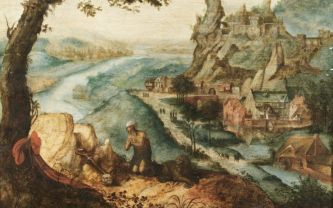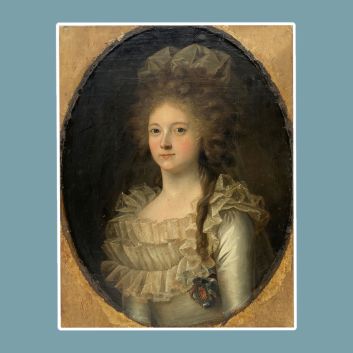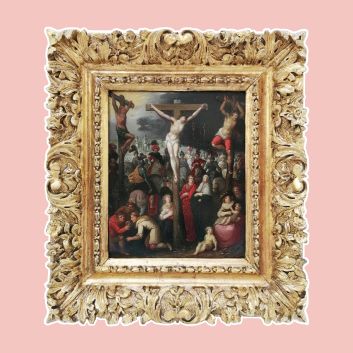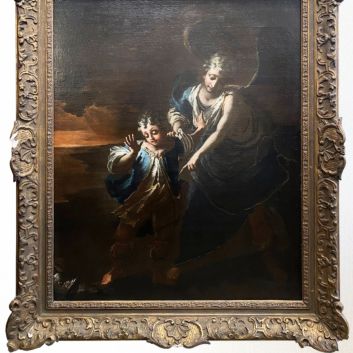Rating and value of works, drawings, paintings by Lavinia Fontana

If you are in possession of a work by or after the painter Lavinia Fontana, and would like to know its value, our state-approved experts and auctioneers will offer you their appraisal services. Our specialists will carry out a free appraisal of your work, and provide you with a precise estimate of its value on the current market. What's more, if you want to sell your work, we'll advise you on the best way to get the best price for it.
Rating and value of the artist Lavinia Fontana
Lavinia Fontana is an artist with an assured personality, who has been able to transcend the boundaries of pictorial genres and has responded brilliantly to both public and private requests, demonstrating her eclecticism. The artist mainly produced paintings, and although we have a few examples, her watercolour drawings, miniatures and sculptures remain extremely rare and do not constitute the bulk of the artist's work or enhance her reputation. Most of the paintings have sold for between €3,200 and €1,250,000. In 2023, the Portrait of Antonietta Gonsalvus sold for €1,250,000, whereas its estimate was between €80,000 and €120,000.
Order of value from a simple work to the most prestigious
Technique used | Results |
|---|---|
Oil on panel, canvas or copper | From €2,500 to €1,250,000 |
Response in less than 24h
Artist's style and technique
In the past, it was unacceptable for a female artist to devote herself to historical or religious painting. Lavinia Fontana, aware of this reality, began her career as a portrait painter in the Bolognese (Italy) upper middle class. Through her attention to detail, she succeeded in magnifying and enhancing women in her works. Her exceptional mastery of depicting women's hairstyles and clothing leaves the viewer breathless, while her dexterity, inherited from ancient statuary, lends her works a remarkable quality. Most of her work, representing religious subjects and portraits, is presented on supports such as canvas and copper. She also paints many self-portraits.

The life of Lavinia Fontana
Lavinia Fontana comes from a line of artists. She was born into an effervescent artistic environment. Her father, Prospero Fontana (a Mannerist painter inspired by Pontormo), worked in the service of Pope Julius III, and contributed greatly to the majestic frescoes adorning Florence's Palazzo Vecchio, alongside one of the paragons of the Renaissance, Giorgio Vasari. In Bologna, Lavinia had the opportunity to hone her skills in her father's studio, although she was unfortunately deprived of the Academy's teaching due to her practice of depicting the nude male body, then at the heart of the studies provided.
In 1577, at the age of 25, she married Paolo Zappi, a disciple of her father. Over time, her remarkable artistic virtuosity enabled her to become one of the most recognized artists of her time, and her husband saw the wisdom of supporting her as his assistant. In this way, she forged an eminent career for herself, entrusting her companion with the necessary touch-ups to perfect her creations.
Lavinia Fontana's imprint on pre-renaissance Italy
Born in Bologna in 1552, Lavinia Fontana, a renowned artist of her time, ventured into the realm of mythological narratives, boldly depicting translucent drapery and even nudity, despite the prevailing notion that female artists had no monopoly on nude painting; indeed, it was virtually proscribed. Her canvases are believed to be the first known examples of nudes painted by a woman during the Renaissance. Determined to build a career on a par with her male rivals, she took up religious painting in 1577 with her depiction of the Holy Family, followed by her interpretation of the scene Noli me tangere in 1581. Lavinia Fontana's version of this scene now decorates the rooms of the Uffizi Gallery in Florence. Her undoubted talent came to be recognized and admired, leading Pope Gregory XIII to commission several works from her, including a portrait of himself. As a result, she earned the nickname "Pontifical Painter"(Pontificia Pittrice), reinforcing her position as an illustrious figure in the art world. However, like Artemisia Gentileschi, little is known about the artist.
Recognizing the signature of Lavinia Fontana
Although it was considered indecent and licentious for a woman to paint nudity, Lavinia Fontana sometimes borrowed her husband's signature and affixed it next to her own. For example, she paints nudity in Minerva Dressing in 1613, preserved at the Galleria Borghese in Rome, defying the viewer's gaze while putting on her cloak.
Know the value of an array
If you own a painting by Lavinia Fontana or one based on the artist, don't hesitate to request a free appraisal by filling in our online form. A member of our team of experts and certified auctioneers will contact you to provide an estimate of the market value of your work, together with relevant information about it. If you are considering selling your work, our specialists will also guide you through the various alternatives available to obtain the best possible price, taking into account market trends and the specific features of your work.
Response in less than 24h
Related topics

Rating and value of works, paintings and drawings by Lucas Gass...
Lucas Gassel was a 16th-century Dutch painter of the Antwerp school. He mainly produced valuable oil paintings.
Read more >

Rating and value of paintings by Antonio Te...
Antonio Tempesta is an Italian Mannerist painter who produced works that are listed and valued on the auction market.
Read more >
Secure site, anonymity preserved
State-approved auctioneer and expert
Free, certified estimates


